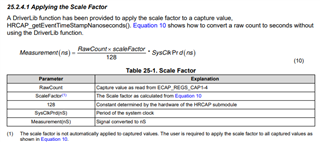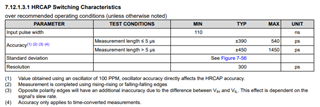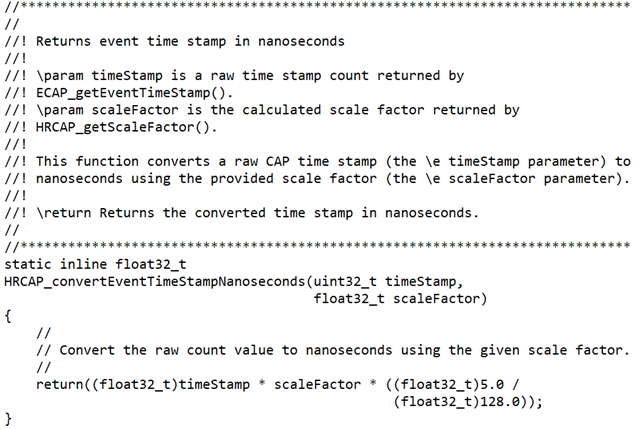Hi experts,
Please tell me about the F28388D HRCAP mentioned in the original thread.
Q1: What is the resolution and minimum measurable time(or Maximum frequency)? (ns?MHz?)
I'm confused about the relationship values between datasheet and TRM.
Q2: Is it possible to measure a 13.56MHz (50% duty) signal according to the specific regulations?
Use with SysClock = 200MHz, that is, SysClkPrd = 5ns.
From TRM "25.2.4.1 Applying the Scale Factor", I read that it is possible to measure at a minimum of 0.0390625ns = 25575.4MHz (*1).
*1: When HRSYSCLKCAP=HRCLKCAP, 5ns/128=0.0390625ns
However, from the data sheet "7.12.1.3.1 HRCAP Switching Characteristics", I read that it is possible to measure at a minimum of 110ns = 9MHz.
Referring to the data sheet, I thought that 13.56MHz could not be input.
I tried sending a pulse signal to the ControlCard, but it was possible to observe up to about 7MHz, and beyond that, it seemed like the numbers would be strange.
(The waveform may have been distorted, so the observation may not be accurate.)
Best regards,
O.H




